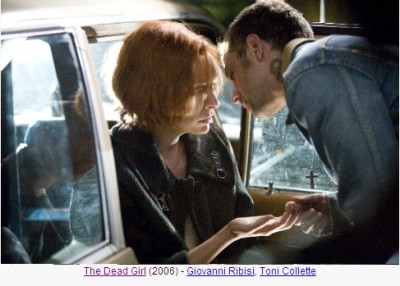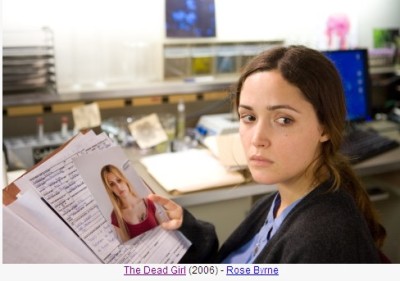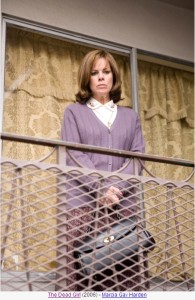By: debbie lynn elias

We first meet Arden. Arden cares for her less than caring mother and is smothered, berated, bullied and badgered to the point of wanting to kill mother. Yet, Arden says nothing and goes through life more or less accepting her fate as a single lonely spinster destined to die alone in her mother’s house – that is until the day comes when she stumbles upon the body of a dead girl covered with ants. Normally reticent and reserved, Arden becomes the center of attention, a media frenzy even, and relishes every moment – especially when she catches the eye of a grocery store clerk named Rudy who asks her out. Why does he ask her out? Does he crave the same attention? Is he as mousy and shy as Arden? Or is there some ulterior motive for his sudden interest. Oh, and did I mention that before calling the police Arden steals a necklace from the dead girl?
Then we have Leah. A wannabe CSI-type gal, Leah studies forensics and works in the morgue. Involved in the investigation of a female corpse whom Leah believes is her sister Jenny who has been missing for many years, Leah finds herself at odds with her mother Beverly who keeps insisting that Jenny is alive. Leah believes that Jenny is the dead girl. Needless to say, there is more than enough mother-daughter drama to go around on this issue.
And then there’s Ruth, a lonely woman whose husband Carl has a more than wandering eye. Secretive to a fault, Carl has a penchant for taking weekend drives without Ruth and without explanation. (Come on Ruth, don’t be stupid. You gotta have an idea what Carl’s up to.) Letting her imagination run away with her, or not, Ruth gets it in her head that Carl is the serial killer responsible for the death of “the dead girl” as well as seven others. Does she continue to be her meek, whimpering, simpering, begging self or does she confront Carl, or others, with her evidentiary opinions? Or if Carl is the killer, will Ruth be his next victim? (I’ll tell you this. If I had to listen to some of her whining, that would be a distinct possibility if I were Carl.)
And finally, we have Melora. Grieving and aggrieved, Melora must comes to terms with the fact the dead girl is her daughter Krista who ran away from home with no explanation; or at least no explanation according to Melora. Determined to hold onto the past and her own stilted memories, Melora goes on an obsessive hunt into Krista’s life. Discovering things about her daughter that no mother wants to ever think about let alone know, Melora locates Krista’s hooker roommate and ultimately, Krista’s daughter. Now facing her own dilemma and demons, we wait and watch as Melora comes to terms with what she must do.
And yes, there is the dead girl – Krista. Vibrant, alive, living life on and over the edge, her only mindset is to get to Norwalk to give her daughter a birthday present. Obsessed with her own mission, she turns to her pimp, Tarlow, for help.
Brittany Murphy, long a favorite of mine since I first saw her in “Don’t Say A Word”, speaks, no, shouts, volumes here as the dead girl Krista. Be she v
ociferously or tacitly portraying a character, her visual expressiveness conveys layers and depths of roller coaster emotion. Like the tide, Brittany ebbs and flows with a joyous fluidity even in the darkest of roles and somehow always manages to bring an ironic hilarity to the character at some point. She is the shining star in the darkness of this story. Toni Collette, always good as a somewhat quirky character, is no different here as the downtrodden, put upon, mousey Arden. On the other hand, Rose Byrne, brings a dimensional ease and intrigue to her character of Leah. Disappointingly, as Ruth, Mary Beth Hurt is one-dimensionally annoying and establishes the whining angst of her character and the frustration with her the first minute she comes into frame. Just one whine from start to finish. Marcia Gay Harden’s Melora is a tough one. A strong performance, there is an underlying sense of discomfort in the role that detracts from Melora’s story.
But this film isn’t all about women. There are some outstanding performances from the men. And at the top of the list if Giovanni Ribisi. Since his early tv days on “My Two Dads” up through “Friends” and more particularly with his stellar turn as Irwin Wade in “Saving Private Ryan” and heartwarming portrayal of the mentally challenged Danny McMann in “The Other Sister”, Ribisi has proven himself almost as chameleonic as Johnny Depp. He can go from young innocent to killer in the blink of an eye and do it believably. Here, as Rudy, he again keeps you on your toes and keeps you guessing as you wonder the whys and whats of the character. He is instrumental is setting up the psychological thriller killer aspect of this film. Not to be outdone, John Brolin is perfect as the skanky scuzzbag of a pimp, Tarlow. He also, keeps you guessing as to whodunit.
Written and directed by Karen Moncrieff, the film has its strong and weak moments, with weak getting the upper hand. Giving individual opening title credits to each one of the stories is probably the most confusing and distressing aspect of the work. With a common theme of women on the nerve of a nervous breakdown trying to survive, irrespective of the character traits of each woman (which are written brilliantly), the five tales are strung together like a badly laced shoe. Opening with “The Stranger”, the psychological tension mounts courtesy of effective emotional manipulation. But then, the tension is broken by the next role of credits and a “new story”; in this case “The Sister” which lacks the emotional oomph of the first story. Moncrieff keeps the roller coaster ride going with “The Wife” which as a stand alone short would be beyond disconcertingly frightening, but again, loses the momentum with the break and new credits and story. Jumping into “The Mother”, this is a story we have all seen played out time and time again both on screen and in our own lives – how little mother’s really do know their daughters (and sons) and the disbelief, even refusal to believe, that lives drift apart. This one story would actually play out better as a full length feature unto itself. Emotionally charged, it still falls flat due to lack of development of the characters and the backstory of Krista and Melora. Where the film really fails, however, is with the finale which is essentially a Cliff Notes version of the entire film.
Technically, the film is better that the storied format. Cinematographer Michael Grady carries the film with his punctuated visuals. Denatured color set against his dark moody photography goes far in building tension and intrigue which is further aided by the individual story editing of Toby Yates. But perhaps the most outstanding work comes from the make-up department who provide some of the most horrifically realistic and grotesque corpses around.
Despite its shortcomings, Moncrieff’s unconventionality and inventiveness should keep THE DEAD GIRL alive long enough to have your own mini-breakdown before hitting the box office.
Arden: Toni Collette
Leah: Rose Byrne
Ruth: Mary Beth Hurt
Melora: Marcia Gay Harden
Krista: Brittany Murphy
Rudy – Giovanni Ribisi
Beverly – Mary Steenburgen
Directed and written by Karen Moncrieff. Rated R. (94 min)












